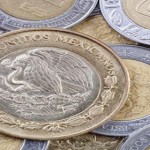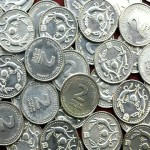Gold fell to the lowest since early-October as the US dollar raced forward after the Federal Reserve wrapped up its Quantitative Easing program, while the US economy expanded more than projected in the third quarter. Copper fell.
Comex gold for delivery in December traded at $1 202.9 per troy ounce at 13:50 GMT, down 1.80% on the day, having earlier fallen to $1 199.3 an ounce, the lowest since October 6th. The precious metal slid 0.37% on Wednesday to $1 224.9 an ounce.
Gold traded near the $1 200 mark as remarks by policy makers were taken rather hawkish by investors, sending the dollar soaring. The greenback rallied after the Federal Reserve, as anticipated, wrapped up its Quantitative Easing program on Wednesday, dismissing recent fears of a global economic slowdown and low inflation and focusing on a robust labor market.
Policy makers said the US labor market has strengthened enough to digest the end of Fed’s bond purchases, citing solid jobs growth and a lower unemployment rate since their last meeting in September. Non-farm payrolls have averaged 227 000 this year, headed for the best performance in 15 years, while the jobless rate fell to 5.9% in September, which is only 0.4% above the top of the range which the central bank considers as full employment.
FOMC members said that interest rates could be hiked sooner than otherwise, if Fed’s goals of full employment and stable prices are reached faster than expected, but stated that the opposite scenario can occur as well. Nevertheless, the Federal Open Market Committee reiterated its previous pledge to keep borrowing costs low for a “considerable time”.
Supporting Feds decision to end its QE program, the Commerce Department’s Bureau of Economic Analysis reported that the US economy grew by an annualized 3.5% in the third quarter, exceeding analysts projections for a 3% growth. The US economy posted its best six-month performance since the second half of 2003 after a 4.6% expansion in the second quarter.
A separate report showed that the number of Americans who filed for initial unemployment benefits in the week through October 25th rose by 3 000 to 287 000, slightly short of analysts projections for a drop to 283 000. However, the four-week average of jobless claims, which strips out weekly volatility, slid to 281 000 from the preceding weeks upward-revised 281 250, hitting the lowest level since may 2000.
The US dollar index, which measures the greenback’s performance against a basket of six major trading peers, was near the highest in almost four weeks. The December contract gained 0.23% to 86.230 by 13:53 GMT, having earlier risen to 86.585, the highest since October 6th. The US currency gauge surged 0.66% on Wednesday to 86.036.
Assets in the SPDR Gold Trust, the biggest bullion-backed ETP and a proxy for investor sentiment towards gold, fell by 1.19 tons on Wednesday to 742.40 tons, the lowest since October 2008. The fund saw its biggest outflow this year last week.
Copper
Copper fell for the first time in six days, pressured by a stronger dollar and concerns of a global surplus. However, losses remained capped by upbeat economic data from the US, coupled with an unexpected rise in Eurozone economic sentiment.
Comex copper for delivery in December slid 1.96% to $3.0435 per pound by 13:50 GMT, having shifted in a daily range between $3.0875 and $3.0410. The industrial metal surged to $3.1140 on Wednesday, the highest since mid-September, and settled the day 0.37% higher at $3.1045, its fifth straight daily advance.
A strong dollar, boosted by Feds action, coupled with persisting expectations for a bubbling global surplus next year, pressured the red metal. Also fanning negative sentiment, two of Chinas largest banks reported on Wednesday a sharp jump in bad loans in the third quarter, with one warning that a credit crunch in the eastern provinces may be spreading to the west.
Copper drew support in the past several session on news for strike action at major copper mines and as Chinas State Reserve Board was rumored to have started purchasing copper again.
A government official said on Tuesday that Indonesia’s Grasberg copper mine, one of the world’s largest, is running at two-thirds of capacity due to a strike, while a union leader said the workers had been suspended.
A Freeport-McMoRan Inc. union official said on Monday that workers at the Grasberg mine will hold a one-month strike, starting November 6th, due to management issues related to a fatal accident.
Meanwhile, workers at the biggest copper mine in Peru, Antamina, which is owned by BHP Billiton, Glencore Xstrata, Mitsubishi and Teck, will walk out indefinitely as of November 10th, Reuters reported on Friday. This would bring offline a total capacity of 30 000 tons per month.
Better-than-expected economic sentiment in the Eurozone, coupled with another batch of strong economic statistics from the US on Thursday also fanned positive sentiment toward coppers long-term demand prospects.
Separately, data by Japan’s Ministry of Economy, Trade and Industry showed on Wednesday that the Asian country’s industrial production expanded by a better-than-expected 2.7% in September on a monthly basis, reversing a 1.9% contraction in August. This was the fastest pace of industry output growth since January.





